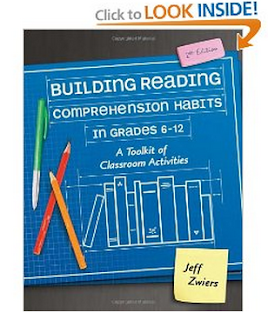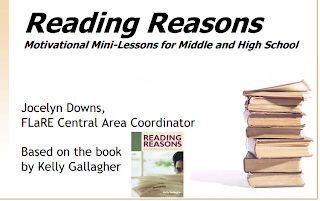I use games out of this resource,
Word Play: Fun Games for Building Reading and Writing Skills in Children with Learning Differences, by Lori Goodman and Lora Myers, when I'd like the whole class to be up, moving around, and being creative. I've used different games from this book in all my classes from grade 9 locally developed English to grade 12 writer's craft. The games are interactive and cooperative and/or competitive.
One of my favourites is called "Odd or Peculiar." I even like the title! :) It is a good one for thinking about a range of words very quickly and is great to do before creative writing. Think of a category - such as fruit, or games, or vegetables, or whatever you want. Your students can work in small groups to think of all the different objects that fit in that category and divide them into 2 groups - odd and peculiar.
Example: Category - Fruit
Odd - cherries, blueberries, apples (2 letters the same beside each other - just like odd)
Peculiar - bananas, oranges, grapefruit (no letters the same beside each other - just like peculiar)
When we play it in my class, I give them about 3 minutes to come up with as many as possible in each group under one particular category. Then one person from each group comes up and writes them on the board. We cross off all the ones that are the same and the groups get points for original words that none of the other groups have. Then we try again with a different category. We usually play with 3 different categories - fruit, games, and animals are my go to categories.
Some of my other favourites from this book are, "Find the Art in Article." That involves reading through a section of text and finding all the small words that are hidden in the larger words. Most small words wins. Another game I like is, "Words All Over Me." Pick a body part like arm, and have the kids write words that rhyme with arm on small pieces of paper and then have one person in the group stick all the rhyming words on their arm. Most original rhyming words wins.












